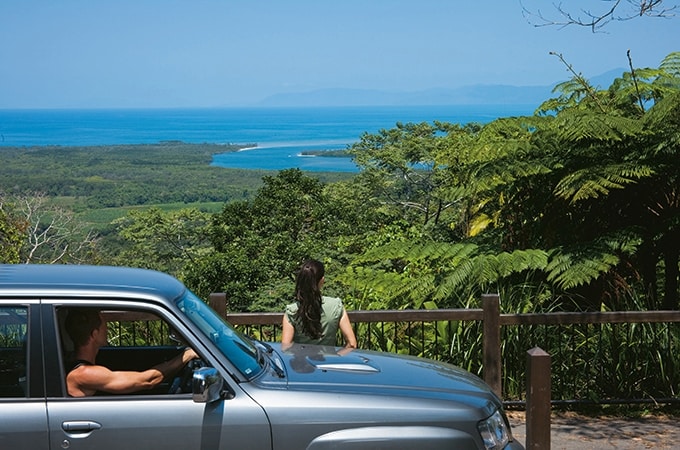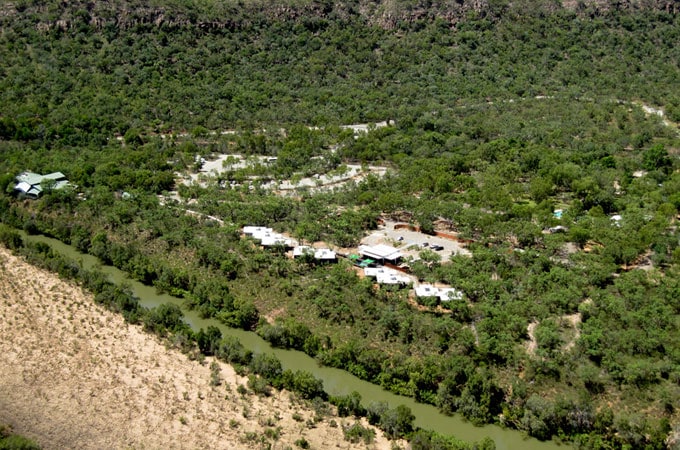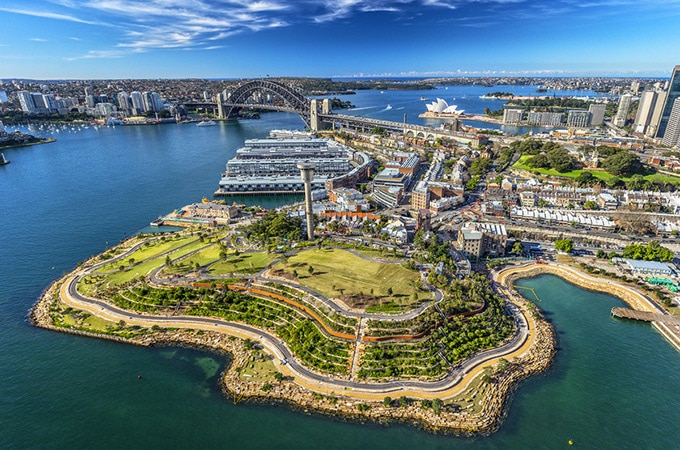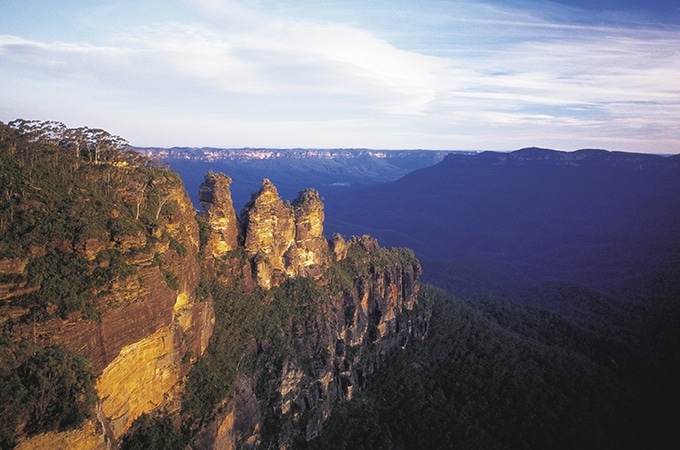Cairns to the tip of Australia is a long, long way. So if time is your enemy and the tip is your goal, a fly/drive combination holiday is a great solution – and that’s what we did on our foray to the Far North of Queensland.
We’d arrived in Cooktown after driving from Cairns. Given that this sounded like a tough assignment, we had huddled in the luxury of The Reef House in Palm Cove to prepare ourselves for the hardships ahead – an early morning walk along the beach got the day off to a very serene start, and the drive to Port Douglas, which took us looping along the coast, opened up magnificent ocean views. Could it get any better? Well yes, it could and did.
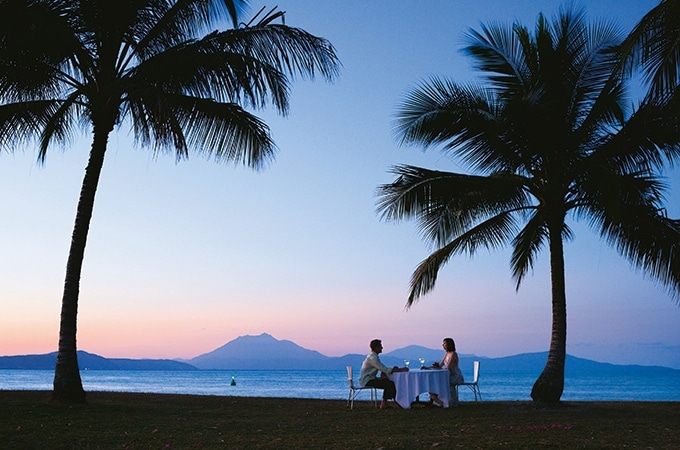
Port Douglas
It’s easy to like Port Douglas – driving in through the avenue of palm trees sets the scene for a tropical encounter – and the village itself is home to a hub which caters for every need. Gourmet dining? Reef trips? Poker school? Picture perfect palm-fringed beach? Oh stop it! Port douglas is ready to rock and roll, and there’s plenty of accommodation options on offer as well. Locals promote it as a perfect place to use as a base to visit surrounding areas but for us the time had come to buckle up and get on the road with Mike D’arcy of D’arcy of the Daintree 4WD Tours, who was doing all the hard work and driving us up to Cooktown on the Bloomfield track.
Driving through the emerald cane farms around Mossman and on to the Daintree ferry the landscapes kaleidoscoped into each other – here a turn-off to a tiny town, there a stretch of sand where the beach almonds were in flower, another beach where a group of travellers were wrestling a map and wondering where they were. It was all great fun, and the glimpses of the ocean as we travelled were magical – but I have to admit that what I really enjoyed was the sections of the road past Cape Tribulation where we climbed up and up, twisting through the forest and crossing rock-strewn creeks. We were very glad to leave the driving to mike as the road was challenging – which made it very exciting and exhilarating for us as each new wonder unfolded. Our destination for the night was the divine Bloomfield Lodge, surely one of the most isolated luxury resorts in the country. Access to Bloomfield is by boat, and you can either fly from Cairns or, as we did, drive to the resort’s boat ramp for a trip across the silky waters of Weary Bay.
Related article:A Dose of Romance in Port Douglas
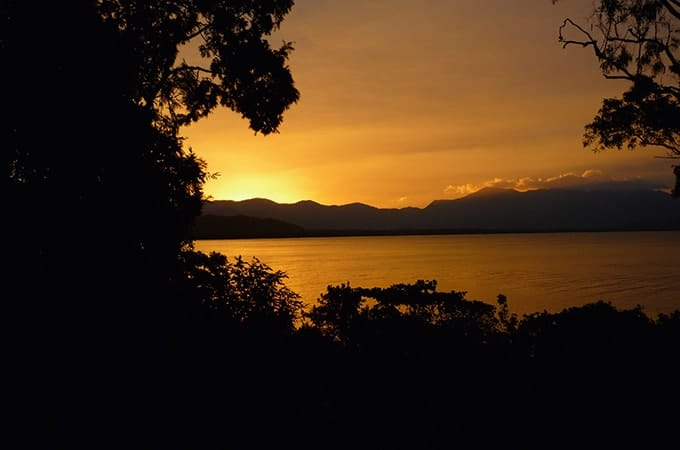
Bloomfield
I’d been to Bloomfield before (yes, I know, how did I get to be so lucky…) and was interested to see if I still loved it 10 years and lots of travel later. It was a no-brainer – the gardens were still lush, the cottages spacious and utterly comfortable, the dining experience still memorable – but above all, this is a place so far removed from civilisation that there is no television, no mobile phones and no computer access (although, reluctantly, management will have to concede to demand on that one). It’s also a haven of natural beauty and the sunsets are magnificent. Unfortunately though, we could only stay overnight so next morning it was back in the trusty 4WD for a trip beside the Bloomfield River which was reflecting the early morning light in a quite dramatic panorama of heavy cloud and perfectly still water.
Mike had promised us a trip to Wujal Wujal Falls, and it was a dramatic sight that greeted us after a short walk along the creek – what was even more dramatic though was the sight of a ginormous crocodile sunning herself on a rock. We planned our escape route should she decide she was hungry (uphill, very fast) and then settled down to enjoy the rugged beauty of the water plunging down to the creek below. It seemed so isolated, so remote and pristine – and then the school kids arrived and the idyll was over.
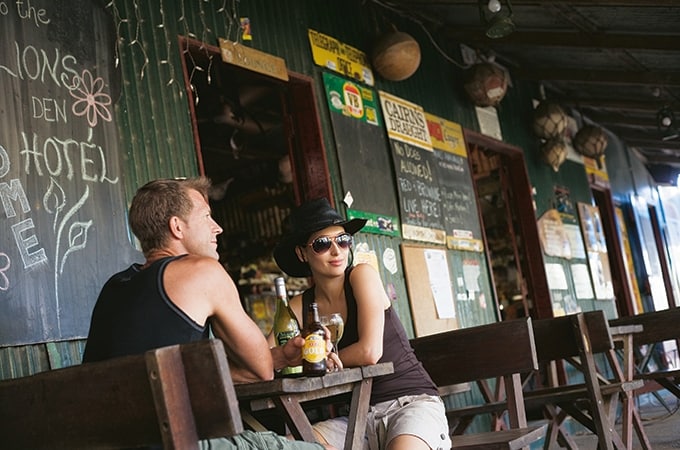
Black Mountain
Off again, and through the villages that dot this part of the world, to Black Mountain which retains a sinister reputation as a place where people, horses and mobs of cattle are said to have disappeared. It’s a mass of boulders, and there is no soil, so no vegetation grows and I have to admit the place is eerie and slightly spooky – it seems ridiculous, it’s just a pile of rocks but… after this, Mike decided to blow away the atmosphere with a visit to Archer’s Point, a contender for the windiest place in Australia. But it was worth it – standing alongside the now disused lighthouse, the view was spectacular, extending down the coast where forested headlands reached into the ocean.
A visit to the Lion’s Den is de rigueur – a rite of passage – for travellers in Far North Queensland. Between Black Mountain and Cooktown, it’s a combination of pub and museum, with camping out the back and a gorgeous creek running through it (no crocodiles here, I was assured). And it’s that rare thing, a pub which is a drawcard for tourists, but still the place the locals come to. We sat on the sunny deck and absorbed the sunshine and the atmosphere, before heading off for Cooktown.
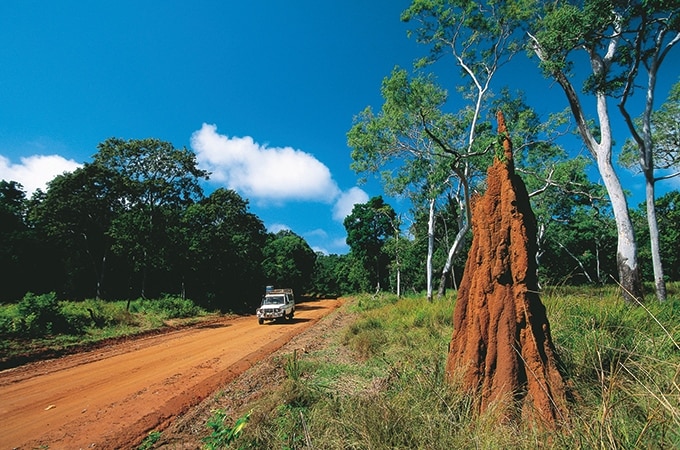
Cooktown
The name is a giveaway to Cooktown’s claim to fame. It was here that Captain Cook beached the Endeavour after she was holed on the Great Barrier Reef and spent three weeks repairing the damage. From Grassy Hill lookout, Cook and his officers surveyed the reef and worked out how to slip through it on their way out. The town is charming – it’s obvious that the locals take great pride in their town and it shows in the riverside park and walk and the annual re-enactment of Cook’s landing. The museum, which is located in an old convent, is home to one of the cannons and one of the anchors that Cook jettisoned when he was lightening the ship in an attempt to get it off the reef.
From Cooktown, you can drive to Cape York, but you need to know what you’re doing, and you need a tough 4WD. Mike left us in Cooktown (it’s as far as he goes), so it was time to call up the lovely and laconic Eric who runs locals and visitors around in his plane – it’s a bit like taking a taxi. Cooktown to Bamaga took two and a half hours flying high above what looked like uninhabited country – surely there must be people down there?
So for us, the travel was easy – and fast! We were picked up and transported to the tip by local guide Tim Freebody. Although the majority of his business comes from fishermen looking for the big hook-up, birdwatchers are also regular visitors to Cape York, attracted by the migration from new Guinea which is such an event that there is an annual Cape York Bird Week in January every year – who knew?
Related article:Discover Queensland’s Nature Coast With the New ‘Great Beach Drive’
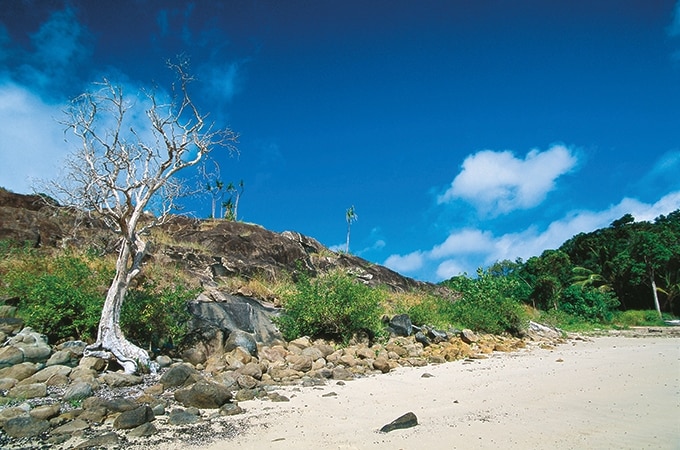
Bamaga
Bamaga is a typical ‘end of the road’ town – if you’ve ever lived in one you’ll know what I mean, and the only way I can describe the vibe is to say that residents tend to rely on each other to face down the difficulties of life in a remote and often hostile environment where a 30-kilometre trip might take an hour or an hour and a half as you negotiate the rutted and pot-holed roads.
For visitors, with plenty of leisure and time to observe the glories of the surrounds, that’s not a problem… and there’s plenty to see. If you’ve driven from Cooktown you may be ready to relax – this is driving that is challenging but exciting.
The drive from Bamaga to the tip was a real surprise. I hadn’t expected marvellous rich, red dirt roads and rainforest for a large chunk of the way. And this was deep, cool rainforest, thick and lush, with the odd stream to cross and tiny outposts dotted along the road. Hidden away are the ruins of a resort which had a brief heyday, and then folded into the forest under a tangle of riotous tropical growth – stand still and the forest will claim you! The rainforest gives way to scrubby bush and open grassy plains with anthills scattered carelessly around and about – and then, the beach at the end of Australia. Frangipani Beach favours the pearly opal colours of the north – it’s not yellow and blue like its southern sisters, but silver and aqua and all the more beautiful for that. It doesn’t do to get too gushy or blown away, there are crocodiles here, and don’t you forget it!
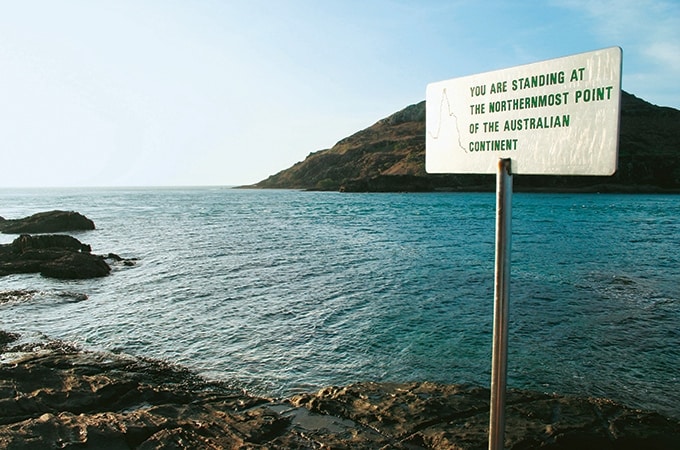
Cape York
The tip is a scramble over a couple of steepish and rocky hills – it’s easy enough to negotiate, and you’ll pass a constant stream of visitors to-ing and fro-ing as you make your way along. The carpark is a bit like a giant party – there’s a flow of bohemian folk who arrive and leave, set up for cup of tea (or something stronger to celebrate) and generally compare their experiences of the drive. For many, it is a ‘bucket list’ moment, and then on to the next adventure. This is a carpark for serious vehicles – no nonsense, sturdy, tough 4WDs, driven by people who know what they’re doing, and love doing it.
Standing on the very tip of Australia was, surprisingly, something of an anticlimax – something I had looked forward to, for a very long time, turned out to be a rather ho-hum moment. But why? the setting was suitably gorgeous – think rocky outcrops, aqua ocean – all the prerequisites for the perfect moment…
Well, I think the answer is that on a trip so filled with interesting things to see and do, such fabulous, world-famous scenery and such a variety of experiences it’s bound to be the case that not everything can be a stand-out… so if standing on the northern most point of Australia failed to ring my bell – it’s only because so many other elements of the trip were the magical stuff life-long memories are made of.
Photos from Tourism and Events Queensland.
Related articles:Where the Rainforest Meets the Reef: Discover North Queensland on a Couples’ Short Break, Tropic Thunder: Discover Exciting Adventures in Queensland’s Top North
